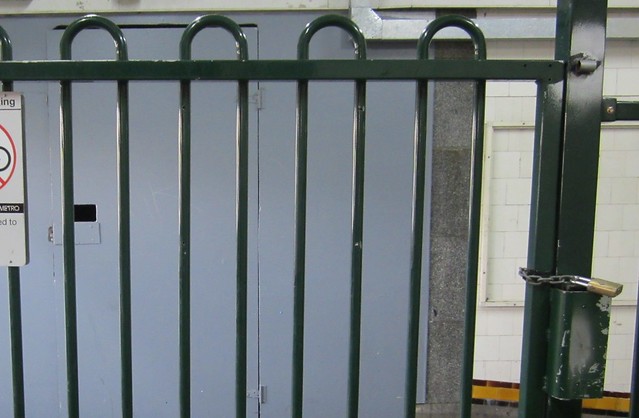I noted this about a month ago. The idea of an emergency gate in the Elizabeth Street subway at Flinders Street Station seemed like a good one, but it seemed doubtful that the automatic release would include the padlock.
So I tweeted:
Ok. I have my doubts that this emergency exit *padlock* is automatic, @MetroTrains http://yfrog.com/mn1pwqsj Care to confirm?
And Metro replied:
@danielbowen thanks for this. We’ve alerted our management at Flinders St.
As one would hope, they take safety very seriously, and it looks like they’ve solved this problem… by removing the sign.
One can only hope that should there be an emergency, a staffer with a key for the padlock can get down there quickly to unlock it.
PS. I’m speaking at the Wheeler Centre tonight, with Paul Mees and Meredith Sussex, on “Transport and Movement”. Details here.


11 replies on “The Metro emergency gate that wasn’t”
That’s gold baby.
… words fail me …
So if you take away the “Emergency” part, it’s all good?
They’ve probably already lost the key and can’t be arsed boltcutting it.
Bwahahaha I am literally wiping tears from my eyes!!!
UGH! Unbelievable.
There! I fixed it!
Wow. Just…wow.
Wasn’t expecting that in the second pic..hahah. I wonder if a similar solution applies to locked toilets?
…i think a swing door into a corridor is a bad idea in an emergency situation anyway. I can imagine it causing a blockage or congestion if many people are trying to exit at once like in a fire evacuation. They would be better off with a sliding gate setup.
Picked up by MX last night, and I liked the spin from Metro. To the effect that the gate is opened during heavy traffic events (like NYE) and is then staffed. Trying to imply that an emergency gate = gate to increase capacity. Presumably Metro changed the safety plan for Flinders St, but they don’t want to admit it.